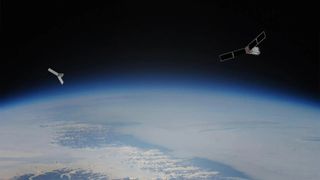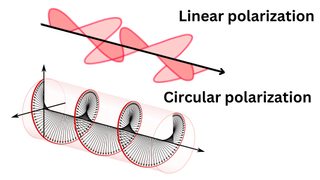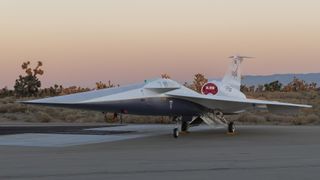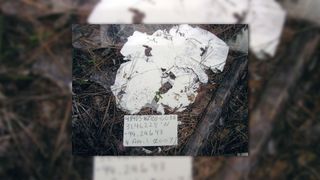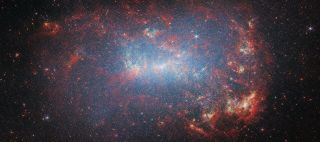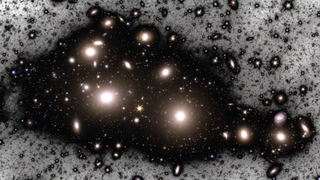Lego has been producing adorable spacemen since back in 1978, and since then we’ve seen the roster slowly expand across the color spectrum. Now, Lego has announced that it’s holding a fan vote to determine which new minifigures will be included in the upcoming Lego Ideas Minifigure Prize Machine, which means we get to select a new color of the iconic little astronaut. There are five color options to vote for: Bright Bluish Green, Bright Yellowish Green, Reddish Violet, Warm Gold, and Dark Azure. This new figure will join the…
Read MoreCategory: The Moon
Our moon
Moon-mapping could level up for NASA’s upcoming Artemis missions. Here’s how
No matter how long humans have looked up and stared at the moon — and despite the number of satellites we’ve sent up to observe it — our maps of its terrain still hit a resolution limit. Yet, scientists want to continually push that limit — and it appears they’ve made some headway. Related: Safety comes 1st for Artemis moon missions despite ‘space race’ with China, NASA chief says A new study has enlisted the help of algorithms to automate parts of a method used to reconstruct terrain data from…
Read More1st annual space piracy conference will examine threats of orbital crime and smuggling
Eye-patches on! Practice your best “grrr.” Plop down pieces of eight, doubloons and cue “Captain” Jack Sparrow! Get ready for the First Annual Space Piracy Conference, set for early next year. Held by the Center for the Study of Space Crime, Policy, and Governance (CSCPG), the conference is a “two-day, invite only symposium that brings together experts prepared to review crime, piracy, and smuggling in space,” according to its website. “Be among the first to discuss mitigating space crime and piracy, from the perspectives of investment, space law, space policy, intelligence,…
Read MoreWatch Rocket Lab launch shoebox-sized NASA climate satellite tonight
Rocket Lab will launch the second of two cubesats for NASA’s PREFIRE climate change mission tonight (May 31), and you can watch the action live. An Electron rocket topped with the tiny satellite is scheduled to lift off from Rocket Lab‘s New Zealand site tonight at 11:00 p.m. EDT (0300 GMT and 3:00 p.m. New Zealand time on June 1). Rocket Lab will livestream the liftoff, beginning about 30 minutes before launch. Space.com will carry the feed if, as expected, Rocket Lab makes it available. Related: NASA’s twin spacecraft will…
Read MoreMassive, magnetic stars beyond the Milky Way detected for the 1st time
For the first time, astronomers have detected the magnetic fields of massive, blazingly hot stars outside our galaxy. They’re stars that actually live in our galactic companions, the Large Magellanic Cloud (LMC) and the Small Magellanic Cloud (SMC). Discovering stellar magnetism in these satellite galaxies of the Milky Way, both of which have a large population of young stars, offers scientists a unique chance to study actively forming stars. It could also answer the question of how much mass a star can pile on before it loses stability. Magnetism is…
Read MoreNASA’s X-59 ‘quiet’ supersonic jet passes key safety review ahead of 1st test flight
NASA’s new X-59 supersonic jet has successfully completed its Flight Readiness Review, marking a pivotal step towards its first flight. The review, conducted by independent experts from across NASA, evaluated the project team’s approach to safety for the public and staff during ground and flight testing, as well as the team’s analysis of hazards that may arise. In turn, the review provides valuable insights and recommendations to the X-59 team as they prepare for further analysis ahead of the jet’s maiden flight. “It’s not a pass-fail,” Cathy Bahm, NASA’s Low…
Read MoreAstronaut’s diary found among fallen space shuttle debris added to National Library of Israel
The handwritten journal pages of Israel’s first astronaut have been added to the country’s national library in Jerusalem, more than 20 years after they were found among the debris from the NASA tragedy that claimed his life. Ilan Ramon wrote most of the diary while he was in orbit aboard the space shuttle Columbia, serving as an STS-107 payload specialist on the winged spacecraft’s last, ill-fated flight. The found pages document Ramon’s day-to-day life in space, from his hygiene routine to the research he performed on behalf of NASA and…
Read MoreJames Webb Space Telescope finds a dusty skeleton in this starburst galaxy’s closet
The dwarf galaxy NGC 4449 is the star of the show in the James Webb Space Telescope‘s latest cosmic portrait. Located 12.5 million light-years away in the constellation of Canes Venatici, the Hunting Dogs, NGC 4449 has much in common with our very own Large Magellanic Cloud (LMC), the satellite galaxy orbiting the Milky Way. Both are small and irregular in shape and each has a distinctive bar running through its center. However, whereas the LMC has one extreme region of star formation, which is the 30 Doradus region famously…
Read MoreThe ‘Star Trek: Discovery’ series finale is a mixed bag (review)
Warning: Spoilers ahead for “Star Trek: Discovery” season 5, episode 10 Here we are, six years, eight months and six days later, and, to paraphrase a well-known “Star Trek” alum, Oh my, the world has drastically changed during that time. And so has “Star Trek.” You may remember that, way back on Nov. 2, 2015, news trickled out that CBS was going to reboot “Star Trek” in some way, shape or form, giving producers a year or so to put something together before the show’s 50th anniversary in September 2016.…
Read MoreEuclid space telescope finds 1.5 trillion orphan stars wandering the Perseus cluster (images)
Using the Euclid space telescope, scientists have discovered a staggering 1.5 trillion orphan stars drifting through a massive cluster of thousands of galaxies, one of the largest structures in the cosmos. These orphan stars, ripped free from their own galaxies, are filling the space between the galaxies of the Perseus cluster with ghostly blue light. This so-called “intracluster” light is so faint that it is many thousands of times darker than the night sky over Earth. By observing this intracluster light in the Perseus cluster, which is located 240 million…
Read More


